A Comprehensive Guide to the Rich Traditions and Symbolism of Chinese New Year

Chinese New Year marks the beginning of a new lunisolar calendar year. As one of the most important festivals in Chinese culture, it is celebrated extensively across global Chinese communities with vibrant decorations, symbolic cuisines, family reunions, and reverent rituals to usher in an auspicious new beginning.
When is Chinese New Year?
The date of Chinese New Year varies every year as it follows the lunar calendar, typically falling between late January to mid-February on the Gregorian calendar.
In 2024, Chinese New Year lands on February 10th, extending for a 15-day celebration through February 24th’s Lantern Festival finale.
Origins and History
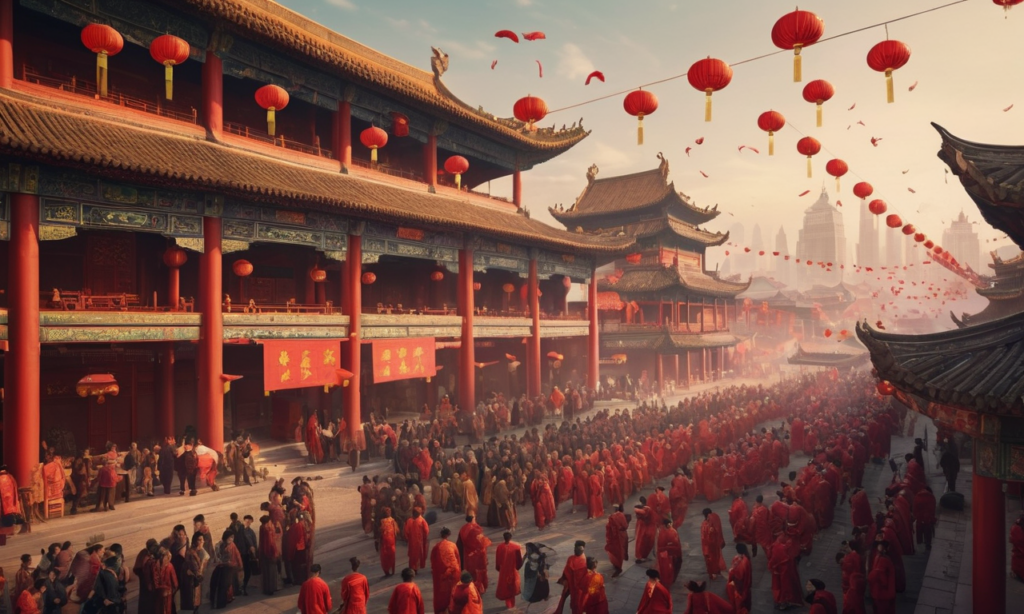
Chinese New Year traditions trace back over 3,500 years1 with the early celebrations centered around offerings for gods and ancestors. The story goes that a beast named Nian would terrorize villages at the turn of the year. To frighten Nian away, people lit firecrackers, displayed red banners, and illuminated their homes, customs that endure today.
Since the mid-1990s, a full week of festivities has been sanctioned as the Spring Festival national holiday period. The extensive preparations like cleaning, decorating, gift-exchanging, and communal feasting leading up to the big day are shaped by the rich lunar symbolism ingrained in Chinese culture.
Traditions and Customs

Chinese New Year festivities showcase an intricate tapestry of beloved traditions that usher in renewal, blessing, prosperity, and sweet bonds of togetherness for the promising year ahead.
The fifteen exhilarating days burst with symbolic cuisine, dazzling firecracker displays, colorful parades replete with leaping lions and undulating dragons, raucous family reunions filled with laughter and love, and more to sweep away the old and ring in the new.
Gleaming red paper lanterns are lit to scare away monsters as elders gift lucky red envelopes stuffed with money to youngsters.
Families unite over heaping steamy bowls of savory dumplings or longevity noodles, savoring food that symbolizes luck, unity, and wishes for the future.
The palpable spirit of optimism and joy marks a meaningful time to reunite, reflect on the past year, renew hopes and dreams, and celebrate the bright, auspicious days in store next year.
Thorough House Cleanings
In the weeks before the new year, families vigorously tidy their homes from top to bottom. Fresh linens, scrubbed floors, washed windows – no corner is overlooked. Sweeping dust and dirt symbolically clear away old troubles and misfortune to make way for incoming luck.
“Any cleaning afterwards risks sweeping away good fortune, so tasks complete well before New Year’s Day arrives,”
explains Lin, a Shanghai local.
Decorating with Auspicious Red
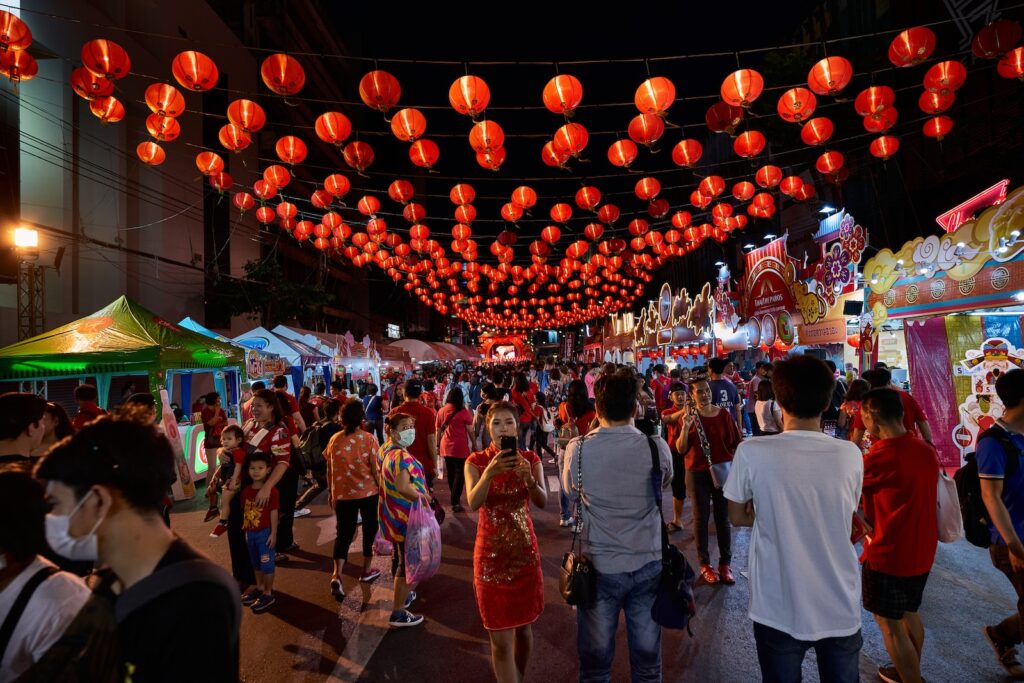
Vibrant red is associated with good luck and joy. Homes and streets glow in red paper lanterns, banners, spring couplets, and lucky symbols. Floral shops brim with blooming peonies, camellias, and azalea flowers.
“We hang red lanterns along our doorway and place vases of red peonies throughout our home to enrich our new year with prosperity”
describes Zhao from Beijing.
Red envelopes stuffed with money are gifted by married couples to children and unmarried young adults. Donning red clothing on New Year’s Day also attracts positive blessings for the year ahead.
Reuniting with Family
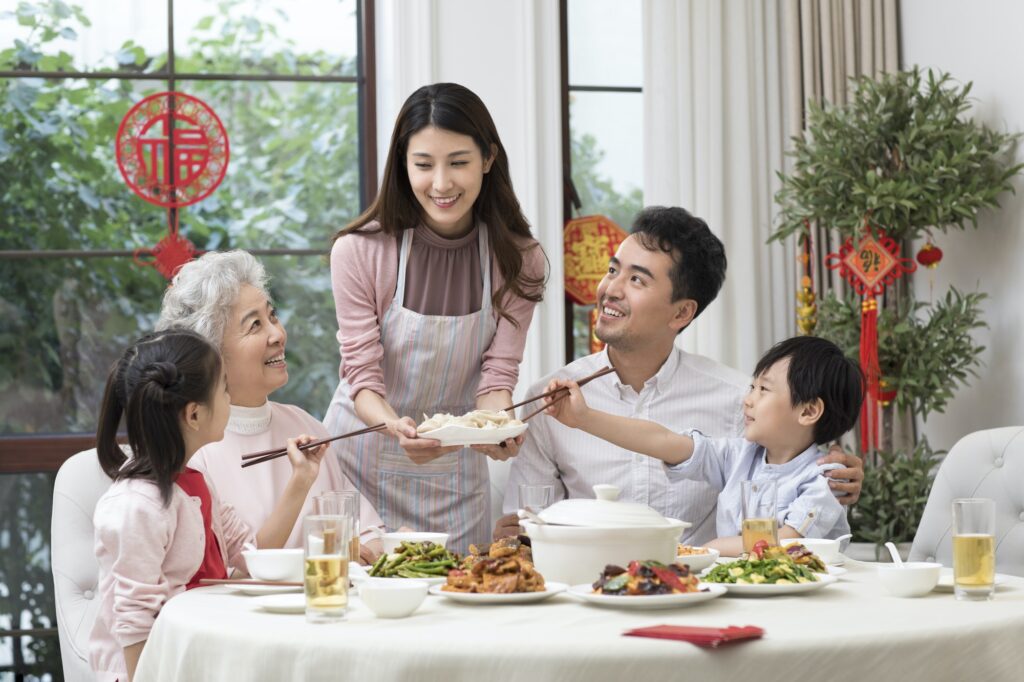
The new year bridges the gap between generations as families reunite over elaborate feasting and venerable rituals. Chinese New Year travel precipitates the world’s largest annual human migration.
No matter how far people roam from their hometowns, returning for the new year is paramount. Grandparents gift red envelopes to children while the youth pay respects through formal greetings, toasts to ancestors, and well-wishes for their elders’ longevity.
Preparing Symbolic Foods
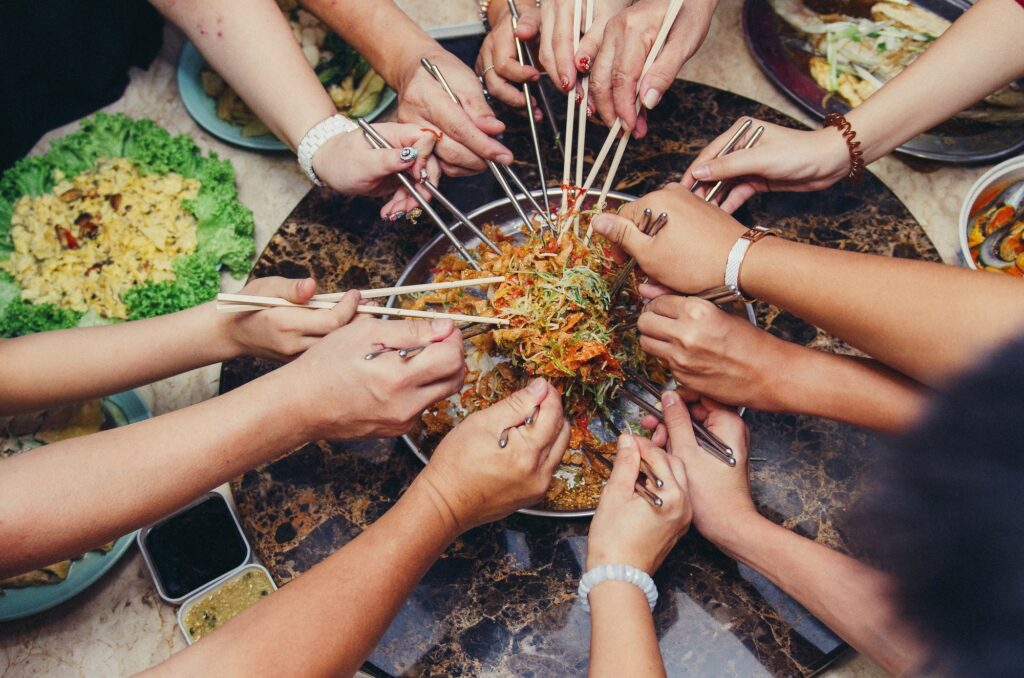
Certain ingredients, dishes, and their namesake homophones carry emblematic meaning. Abundant feasting conveys wishes for an abundant year ahead.
- Fish represents surplus and togetherness
- Noodles signify long life
- Dumplings resemble gold ingots
- Spring rolls usher in fortune
- Rice cakes stick families together
- Tangyuan sweet rice balls cultivate family unity
“Our festive new year’s meal overflows with symbolic fare – fish, noodles, dumplings – carefully chosen to sweeten the year ahead,”
Wang describes fondly.
Celebrating the New Year

The extensive celebrations traditionally last 15 days, each marked by specific customs.
Chinese New Year’s Eve
The last day of the old year sees families unite for a lavish reunion dinner. Dishes like fish, noodles, and dumplings festoon tables alongside desserts like nian gao rice cake. Gifts are offered to household deities to curry favor, couplets are posted on doors, and windows are opened to welcome the new year in. As midnight nears, fireworks and firecrackers snap loudly to scare away evil spirits.
Chinese New Year’s Day
The first day dawns with drummer parades in colorful regalia and explosive firecrackers meant to bolster the festive din. Children don new clothes and elders gift lucky red envelopes with crisp new bills. Families exchange greetings and good tidings while flowers and offerings bedeck household altars. Savory dishes specific to the new year like niangao rice cakes are ceremonially relished.
Lantern Festival
The dazzling Lantern Festival on the 15th night marks the end of formal celebrations with glowing tributes to the full moon. Citizens bear glowing lanterns to temple fairs and parades in tribute to lunar radiance. Sweet tangyuan rice balls simmering in syrup are customarily served alongside family to round out the festivities on a sweet note.
The extensive preparations ritualize clearing away an ill fortune to make way for renewed blessings. When the new moon rises between January 21st and February 20th, the symbolic celebrations sweep onto the stage to usher in the Lunar New Year for billions across the globe.
Key Takeaways
- Chinese New Year marks the turn of the lunisolar calendar, typically falling between late January and mid-February.
- Traditions trace back over 3,500 years with the storytelling of a beast named Nian that would terrorize villages when the year changed over.
- The color red, firecrackers, family reunions, symbolic cuisine, and extensive cleaning rituals persist today to fend off evil and beckon fortunes.
- 2024 lands on February 10th as communities welcome the Year of the Dragon under the Chinese zodiac.
- Celebrations traditionally last 15 days as the new crescent moon guides sweeping preparations to clear away old troubles and invite forthcoming luck.
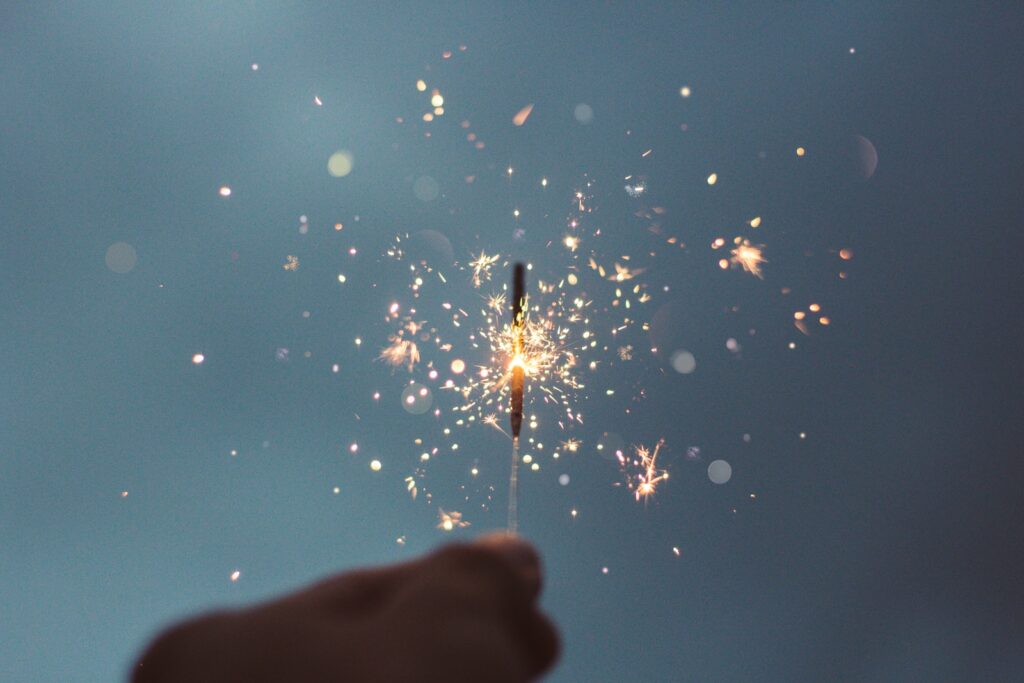
Frequently Asked Questions
What is the most common Chinese New Year greeting?
The customary greetings are “Xīnnián hǎo” meaning “Happy New Year” and “Gōngxǐ fācái” meaning “Wishing you prosperity”.
What does the dragon symbolize and when is the next Year of the Dragon?
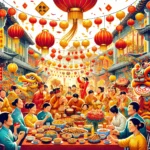
As the mightiest sign, the Dragon represents leadership, independence, and charisma. The next lunar Year of the Dragon is 2024 in the 12-year cycle.
What are typical gifts for Chinese New Year?
Common symbolic gifts are red envelopes stuffed with money, mandarin oranges, and floral blooms like peonies or narcissus which resemble prosperous blessings.
What foods bring good fortune for the New Year festival?
Customary lucky fare includes fish, noodles, dumplings, spring rolls, rice cakes, and tangyuan glutinous rice balls in sweet soup. Auspicious ingredients express wishes for abundance.
How can I decorate my home for Chinese New Year?
Display red paper lanterns, chunlian paper cutouts, vases of blossoming flowers, and zodiac dragon decorations as symbolic motifs that invite incoming auspicious energy.





